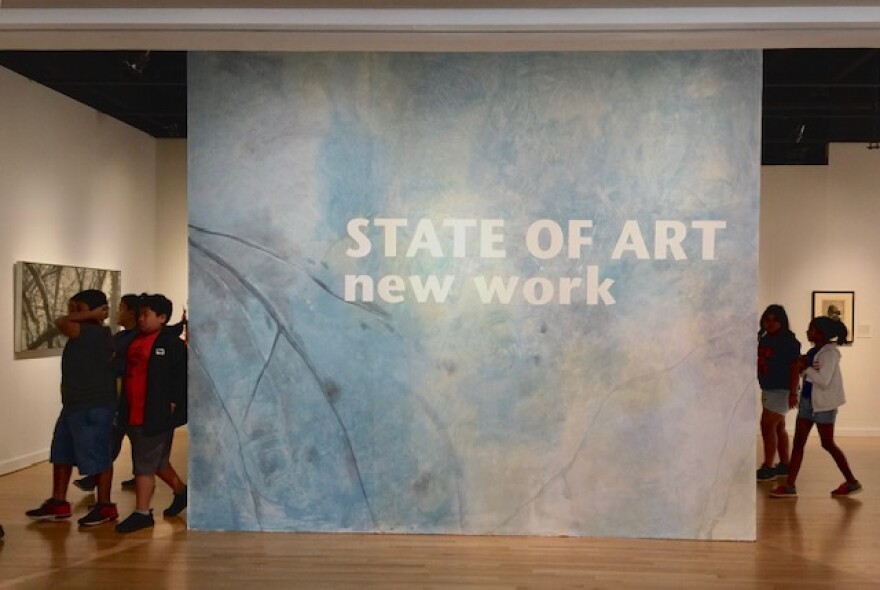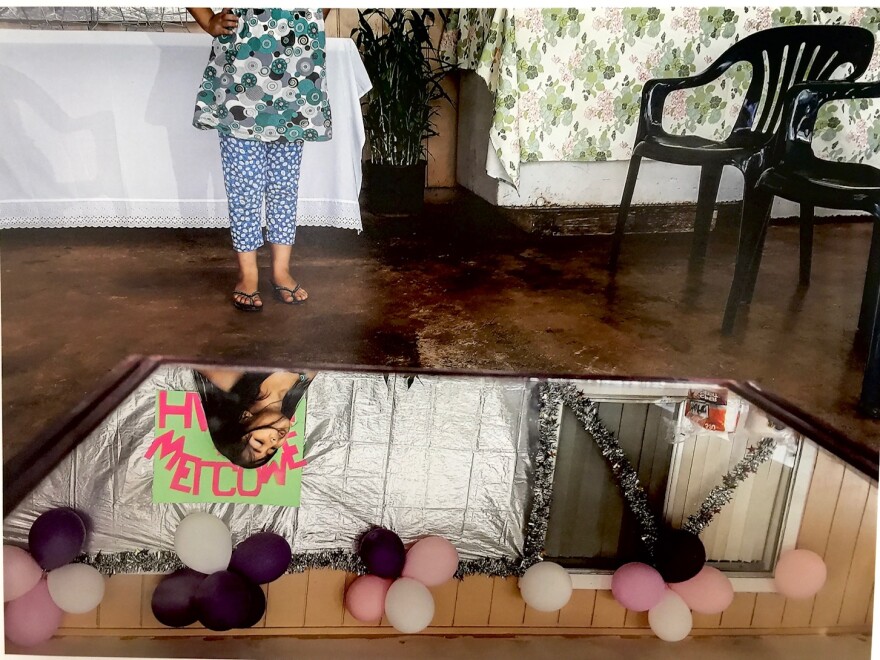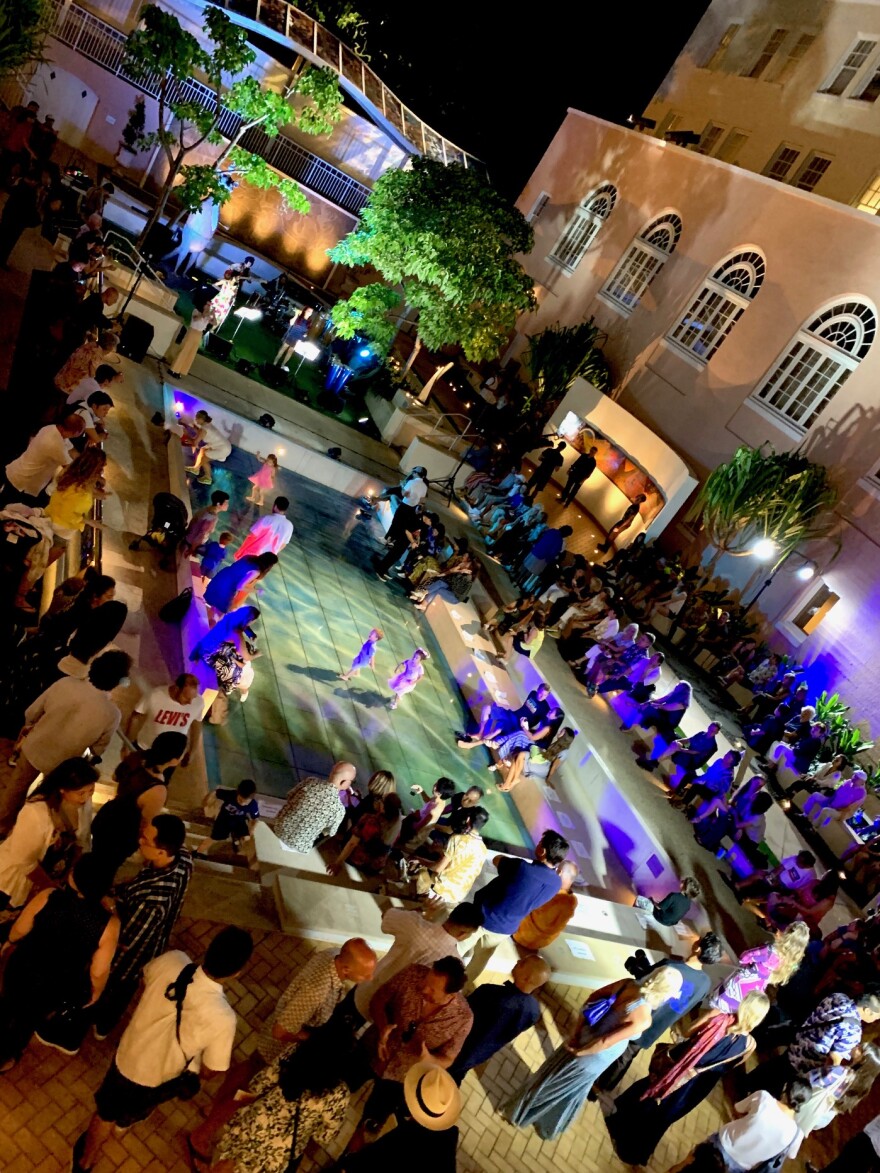Final interviews are wrapping up today for the next director of the Honolulu Museum of Art. But that’s just part of the change underway in the infrastructure of Hawaii’s art world. In the UH system, there are new gallery directors at KCC and on the M?noa campus. There are changes too, at the State Art Museum, HiSAM, and at the State Foundation.

The throngs enjoying First Fridays at the Hawai‘i State Art Museum, HiSAM, have been growing, and more and more of them are in the galleries looking at art. Unbeknownst to them, alot of changes on the inside are making these events possible. Jonathan Johnson has been Executive Director of the State Foundation on Culture and Arts, SFCA, since 2014.
“Over the last five years, (we’ve been) looking at all of our systems and revamping them.”
One change involves the $500 thousand dollars worth of State Biennium Grants the SFCA administers. These grants reach deep into communities across the state.

“The coordinator resigned on Christmas eve (2018),” says Johnson, “We needed to award grants by June 30, so staff rallied together and said okay, how can we administer this as fast as we can, and as simply as possible, and cut out all the red tape?”
SFCA simplified the application by 30%, and applicants were told that applications would be funded in full. If organizations asked for the same amounts they always get, they would all be funded. In addition, SFCA had all applicants send a representative, so adjudication became a peer review process. Johnson says, the applications were then ranked, according to focused criteria.

“We funded fully the application amounts as far as we could get down, with the priority of underserved rural reach, and how broad is the reach of that grant application. So it’s much more focused, but it’s much more money.”
Rather than everyone who applies getting a little bit, half as many grantees got up to $15,000 apiece. Whereas in the past, 72 organizations were funded, in this cycle, 38 larger grants were awarded.
“It’s a big change,” acknowledges Johnson, “It will be significantly different and some ways that that happens is, for example, Hawai‘i Youth Symphony.”
Hawai‘i Youth Symphony usually got about $7,000. This year they’re getting $15,000 which will allow musicians to audition students around the state in person, then fly the student to weekly rehearsals in Honolulu. Johnson says a program like that identifies excellence and provides access to development for students across the state.

Johnson says they were looking for the reach of a program, with an emphasis on education and underserved areas. Find exact criteria on the SFCA website under Biennium Grants.
Underserved, Access, Education, Culture---those are the SFCA’s strategic priorities.
There are organizations that did not get funding they had depended on for years, small amounts of two or three thousand dollars, with which they did important community work.
Johnson acknowledges their pain, however, he says the next round of applications are already in, and the same selection process will be used again. It could, however, be revisited after the new Grants Administrator is in place.

The grants administrator position just closed, as did an open Arts Educator position. Soon, another state job in the arts is coming up, Collections Manager, for the Art in Public places Program, Karen Ewald is the Director there, she’s also in charge of HiSAM.
“It’s kind of an experiment, we’re seeing what sticks, but so far, everything that we’ve been doing has stuck. Once I hired Aly, it happened very fast.”
Ewald hired Aly Ishikuni, of MORI by Art and Flea, to produce First Fridays.
HiSAM’s attendance went up 110%, from 38,000 to now, the high ‘70’s. They went from 150 people on First Friday, to 1500 people, and the whole First Friday production is sustainable. Not only are all service providers paid (not always the case with art events,) but costs are being covered by venue rentals.

“And that was during the construction,” says Johnson. “Now the barricade is down, the garden is open.”
Ewald says people love heading to the open air sculpture garden on the ma uka side of the museum. Head into the front doors and you’ll see the Hawai‘i based HiSAM Gift Shop on the right. Straight ahead is Artizen Café, with popular lunch selections. Continue out, and the sculpture garden opens up, with its sunken glass deck. (Doug Young’s Waikui, enamel on glass, 2011)
“We’re getting repeat visitors,” says Ewald, “We’re getting new people, it’s an activated space now, for adults and children.”
Today is the start of the 2019-2020 school season for Art Bento, a tried and true program that combines classroom activities and museum visits for students. Another program, Super Saturdays, family art activities at HiSAM, got off to a big start this summer. They expected 200 people at their first event and 800 showed up.

This year, through the combined efforts of SFCA, the Hawai‘i Community Foundation, federal grants and general funds from the legislature, the Artists in the Schools Program had $700,000 to work with. As a result, all 111 schools around the state that requested a visiting artist will be served. In addition, schools that have permanent works of art from the state are now eligible to request an artist or resource person to come and interpret those pieces for new audiences.
HiSAM’s front lawn is clear now, and the museum will take a breather, but there are plans to make it more accessible and add an outdoor stage. The legislature has already committed 2.6 million dollars for that project.
HiSAM, with the great lawn, the sculpture garden, the glass enclosed upstairs atrium, and the balcony overlooking the garden, is becoming a popular site for weddings, meetings, and other events. Louis Vuitton stopped by last Tuesday to take a look.
In the galleries on the second floor, the new “In Hawai‘i” exhibit juxtaposes traditional and contemporary work in the islands. Across the way, is a show of recent acquisitions.

For students grades 7-12, the Scholastic Art Awards have just opened for submissions. Participation is free. All submission of artwork must be completed on the Alliance for Young Artists and Writers website by 11:59pm EST (6:59pm HST) on Thursday, December 12, 2019.
First Friday in October marks the start of Pride month. The theme for HiSAM’s First Friday is Scarlet Lounge, with film screenings, art demos, and a runway show.
As far as projects this fall, the State is recarpeting the second, third, and fourth floors of the Capitol building, so the Art in Public Places crew will have to move, then reinstall 900 works of art. The new Kona Judiciary is currently going through the process of selecting the art works for their new building.




